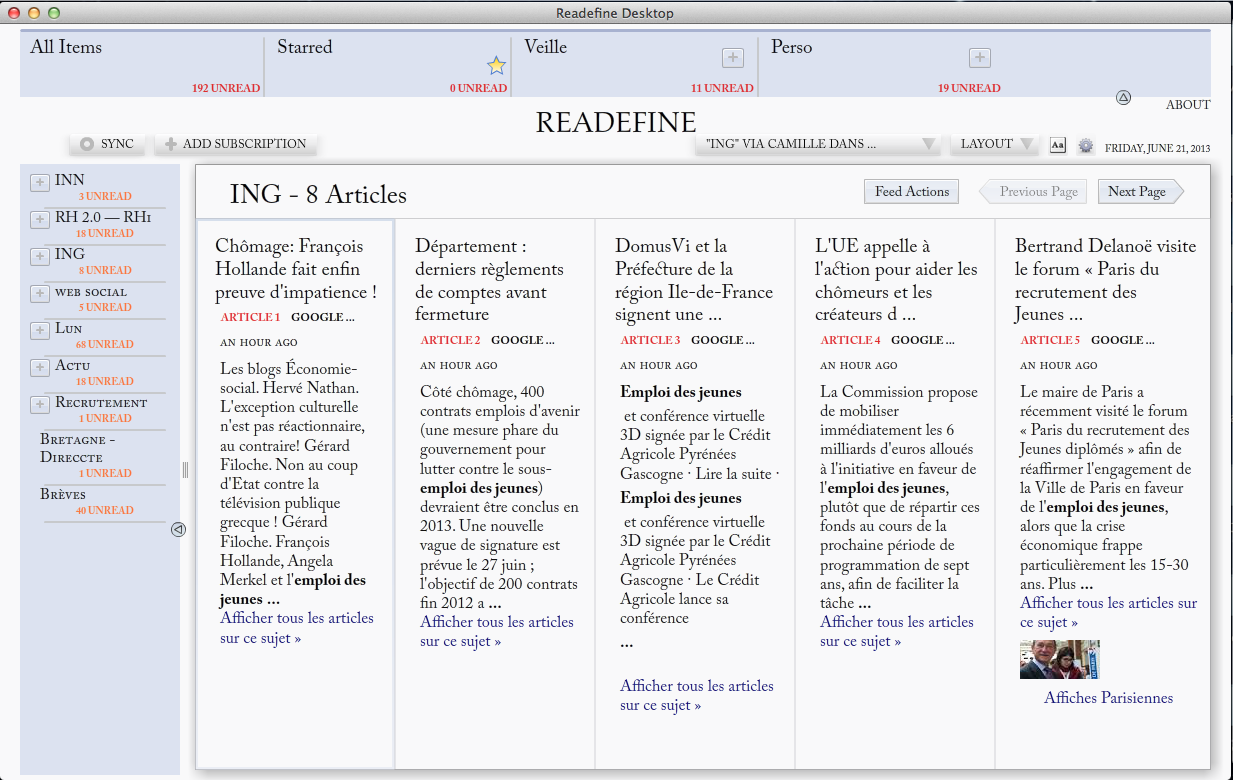
There isn’t any option to open the whole article for reading within the app and there aren’t any reading modes or text customization options available as well. You can swipe left or right to move to the next of the previous article, share and save the content through different apps, mark content for ‘read later’ or unread, and… yea that’s pretty much it. Feedlyįeedly’s reading experience upholds the same minimalism that’s the app’s hallmark. Below you’ll find a comparison between the two tools from the readability aspect. Readability has a vital role in an efficient content curation app that enables users to easily go through the content they’re interested it and share it on different platforms. You can only log in or sign up through your Facebook or Google account or create an account on the app. Inoreader, on the other hand, runs a bit low on the login options. If you’re concerned about your privacy, you can sign up by creating an account on the app itself.
#Rssowl vs feedly windows
Feedlyįor the new users, Feedly offers a number of different login or signup options including Google, Facebook, Twitter, Apple ID, Windows ID, Evernote, or logging in through your company’s account. Here’s a comparison of the login options that each tool offers. Login Optionsįor a good user experience, most apps give multiple login/ sign up options to new users. When it comes to customizing the UI, Inoreader offers different languages, customization of the sidebar, tab title, article listing, and four different color themes to choose from.Īdditionally, there are different ways you can customize the feed page through the ‘reading view’ that opens up a long menu of display options and you can also sort your articles as starred or older than a specified date. It is, however, comfortable and offers a dashboard from which you can access your feed, settings, customer support, user guide, and a small app market to get browser extensions and other products from the developer. Talking about Inoreader’s interface, I wouldn’t call it clean. There are also different options to change the layout of the feed, the arrangement of how they appear (latest or oldest), and you can check or uncheck if you want to see the unread articles only or the muted ones (or both). There’s a collapsible navigation bar on the side showing your feeds, search button, a user guide, and your account info. You can change the theme from light to dark, change the font, text size, and alter the display density, etc. Feedlyįeedly features a very clean and minimal interface with many customization options. Following is a comparison of the UI of both tools. User interface has much significance for every website and app, however, for content curation tools, having a neat and straightforward interface is of utmost importance. Similar features and exclusive features of both,.Inoreader, I have arranged their features into different categories and I’ll be giving a comparative picture of the two tools within the categories. To help you get a better understanding of Feedly vs. However, the dilemma I faced (like most of you would be facing now), was which one should I go with? Well, to help you out, I explored both tools and their respective features and in this post, I am going to share my experience and observations with you so you can make an informed decision. It gives you a platform where you can get all kinds of news and updates on the topics that interest you and the content comes to you the minute it’s available. Similarly, Inoreader upholds – Take back control of your news feed – and there isn’t more truth in that. It is a unique content aggregator that filters out all the unrelated content and creates a news feed based on the topics and trends that you’re actually interested in. Inoreaderįeedly‘s motto is – More signal, less noise – and this is exactly what it does.

When talking about content curation tools, from all those available in the market, the most popular and feature-filled tools are Feedly and Inoreader. Hence, RSS readers are almost obsolete because of their inflexibility and have been taken over by content curation tools that are intuitive and customizable. Today’s reader wants a news feed tailored to his preferences. There was a time when RSS readers were the only content aggregators around.


 0 kommentar(er)
0 kommentar(er)
